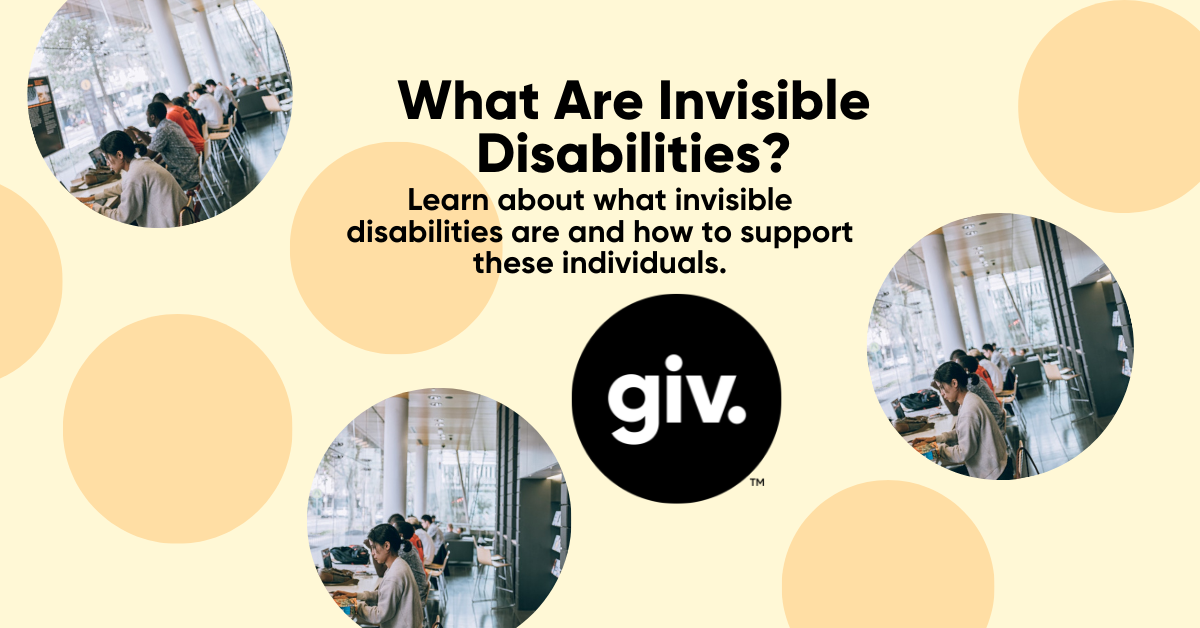Invisible disabilities is a term that is being used more widely as people become more comfortable talking about disability in general, but also bringing more awareness to the myriad of disabilities that exist. If you’re wondering, “what are invisible disabilities”, we hope to break that down for you in this post.
What Are Invisible Disabilities?
Invisible disabilities are disabilities that you don’t know exist if you’re simply just looking at someone. Individuals with these types of disabilities typically have chronic illnesses, or other diagnoses that impact their day-to-day life.

Examples of Invisible Disabilities:
There is a long list of diagnoses that could fall under this category, but a few of them are:
- Cognitive Impairment
- Brain Injury
- Chronic Illnesses
- Multiple Sclerosis
- Chronic Fatigue
- Chronic Pain
- Deaf/Hard of Hearing
- Blindness/Low Vision
- Anxiety
- Depression
These are all very real diagnoses that impact people’s ability to access their environment, interact with society in a typical manner, care for themselves independently, and/or effect their lives in many different ways.

Interacting with People with Invisible Disabilities:
The reality is that we don’t know what other people are going through. The fact that there are many individuals who have invisible disabilities means that on a daily basis you may interact with someone who is going through some profound challenges that you may never know about. When interacting with individuals you might be meeting for the first time, and you have no prior information on their health status, here are some ways you can be inclusive at all times:
- Respect people’s privacy. If you suspect that someone might have a disability based on your interactions with them, it is still not okay to ask them about their disability. If they want to speak about it they will, but it’s not your right to know their medical history.
- Don’t judge or make assumptions about people based on the accommodations they use. If someone is using a handicap parking space, but doesn’t “appear” to have a disability, that isn’t your business. If someone is using a certain accommodation, you should assume they’re using it for a valid reason and that it was given to them appropriately.
- Language matters. Because you interact with so many people on a daily basis, and because you don’t always know when someone has an invisible disability, try to remove abelist language that is harmful to people such as saying something is, “lame, dumb, crazy, etc…”, or phrases like, “Are you blind?”. These words/phrases directly belittle individuals with disabilities and should be removed from everyday conversation.
Individuals with invisible disabilities are all around us as we interact with the world on a regular basis. It’s not our job to analyze, judge, or know everything that someone is experiencing, but we can be allies by removing ableist language from our vocabulary, respecting people’s privacy, and help to accommodate as needed.






